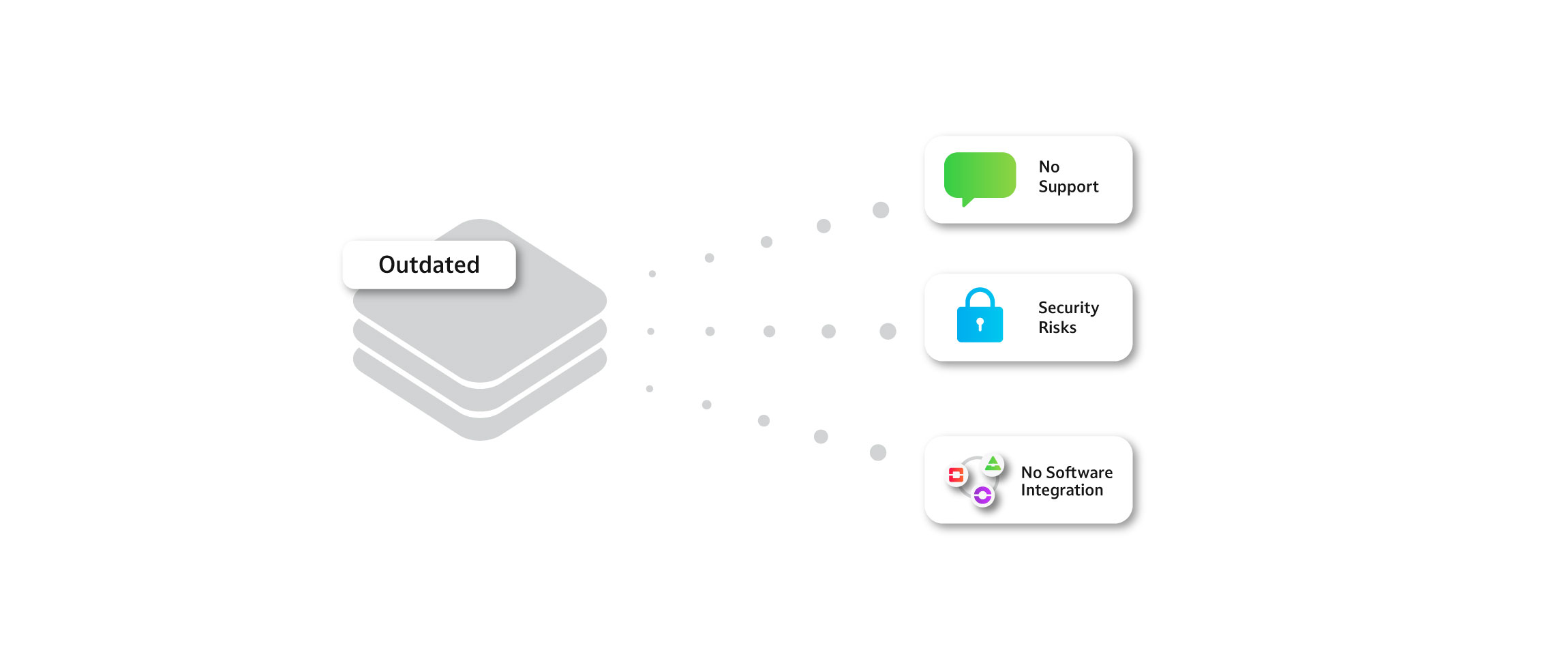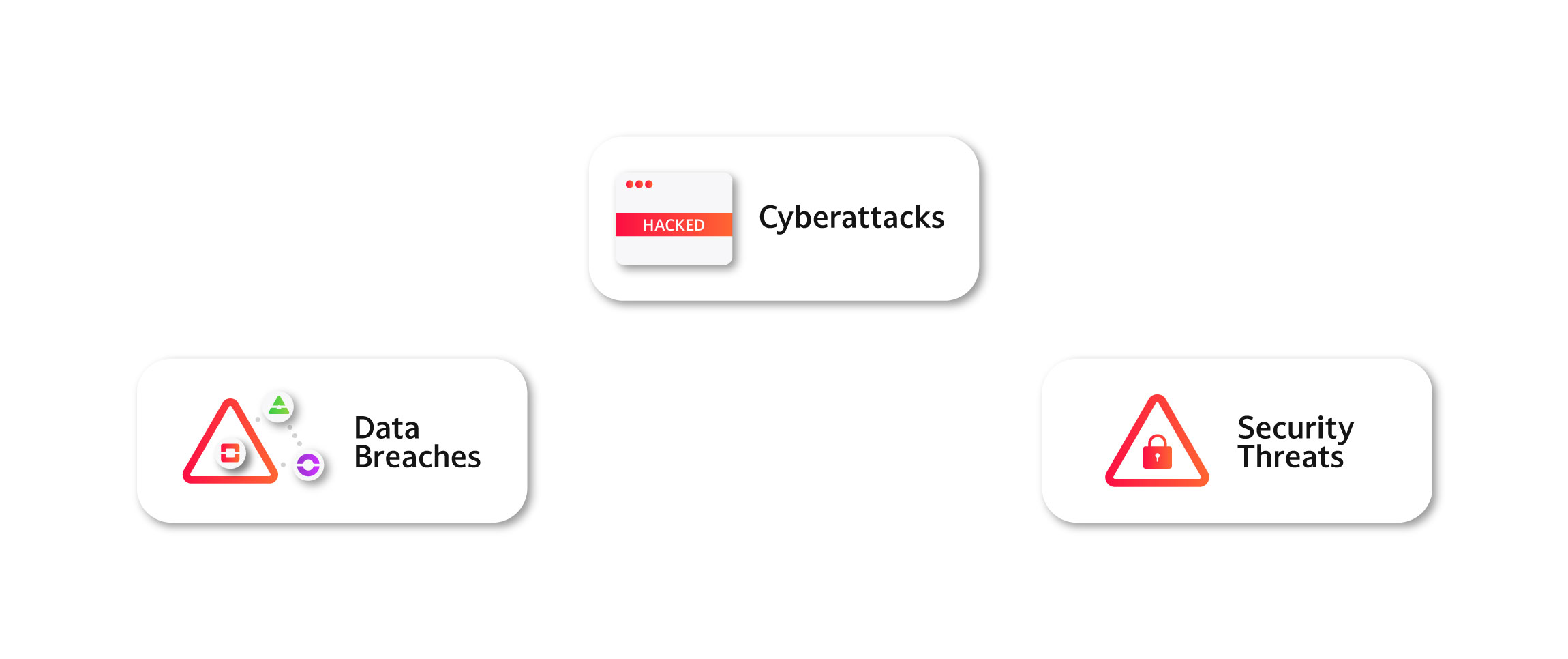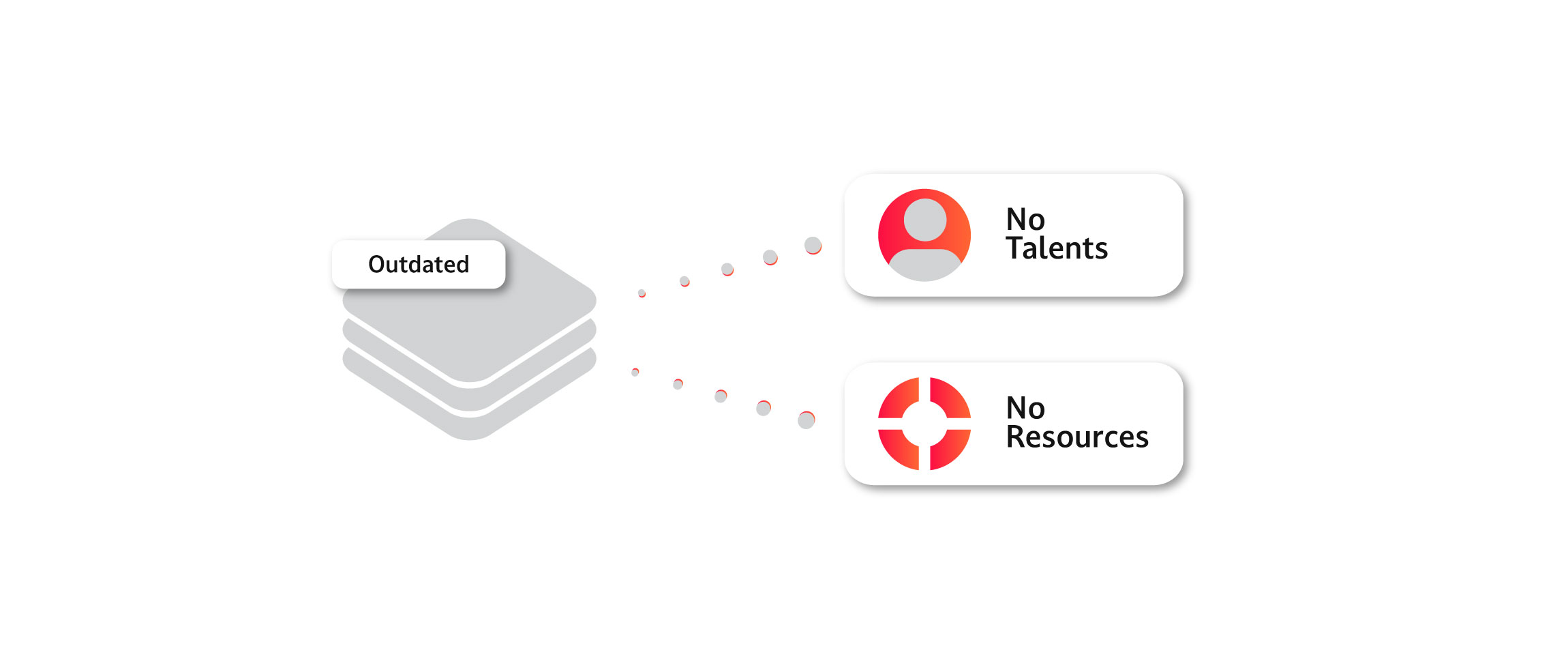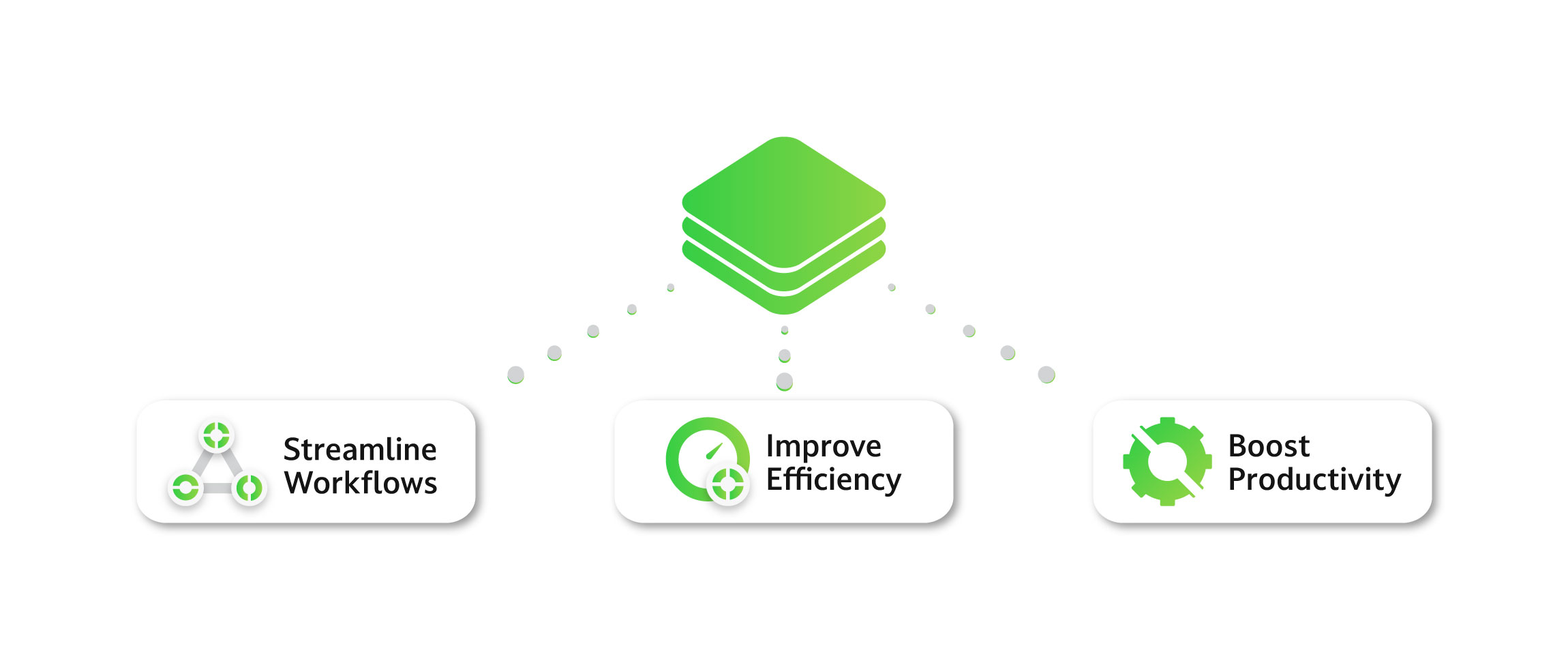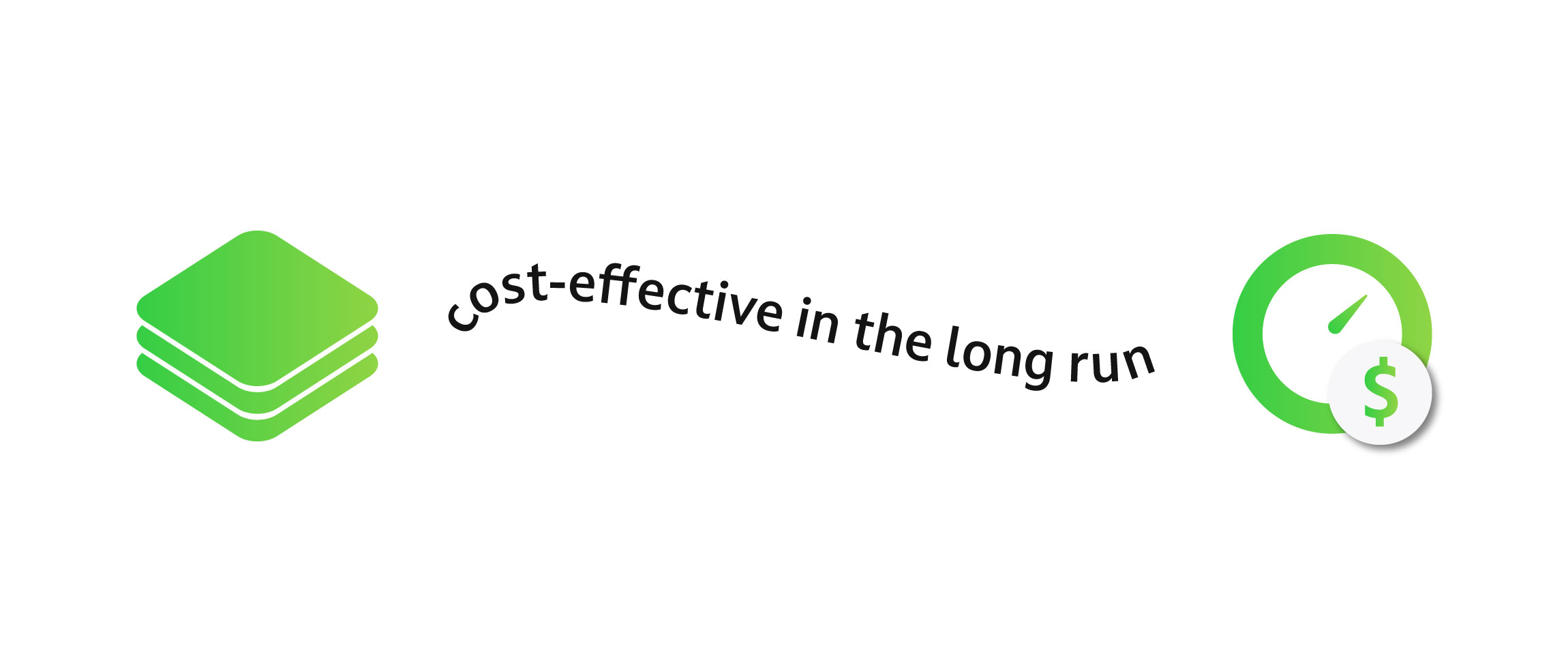In today’s fast-paced digital world, enterprise companies must continually evaluate their legacy systems’ modernization and suitability for their needs. Legacy software is often the bedrock of an organization, and it can be challenging to move on from.
However, when the legacy software is costing the company more than avoiding modernization is saving, it may be time to leave it behind. Let’s explore the factors that enterprises should consider when deciding whether or not to retire their legacy systems and move to modern software alternatives.
What Exactly IS a Legacy System?
“Legacy system” refers to any software that is outdated or obsolete, mainly due to advances in technology. Such software is often no longer supported, is vulnerable to security risks, and may be difficult to maintain or integrate with modern software systems. Enterprise companies have long relied on legacy software systems to manage their data and information, automate processes, and streamline workflows.
However, there are several situations where continuing to use legacy software can be detrimental to the organization.
The Security Risks of Outdated Software
Legacy software is often unsupported, meaning no security patches or updates are available to address any security vulnerabilities. In contrast, modern software is continuously updated to patch any security vulnerabilities, and enterprises can take advantage of new security features that are not available in legacy software.
Using outdated software puts an enterprise company at risk of cyberattacks, data breaches, and other security threats.Cybercriminals target vulnerable systems with outdated software, and legacy software makes an enterprise company more vulnerable to cyberattacks, making it more challenging to protect sensitive data. This means that companies that use legacy software are at a higher risk of experiencing data breaches, which can result in financial losses, damage to brand reputation, and loss of customer trust. Leaving legacy software behind and adopting modern software solutions helps companies protect their data and minimize the risk of cyberattacks.
Integration Challenges & Expenses
Modern software applications are designed to integrate seamlessly with other software, allowing businesses to automate workflows and streamline processes across different departments. Legacy software, on the other hand, often requires complex integrations or custom coding to work with modern software, making it difficult to integrate with other systems.
This can create significant bottlenecks in data processing and workflows, leading to inefficient processes, errors, and delays. As enterprises evolve and grow, they require software solutions that can scale and integrate easily with other systems. For example, an enterprise company may need to integrate its financial and accounting software with its customer relationship management (CRM) system to streamline its invoicing process.
Legacy software may not be able to support these kinds of integrations, leading to the need for modern software.
High Maintenance Costs
Legacy systems are often costly to maintain, with high fees associated with upgrades, updates, and customization. As the software ages, it may become increasingly difficult to find IT professionals with the skills necessary to maintain the software. This can lead to high personnel costs and the need for expensive consultants to maintain old software.
Moreover, the cost of maintaining legacy software often increases over time as the software becomes less common, making it more challenging to find affordable maintenance talent and resources. The cost of maintaining legacy software can be prohibitive for many organizations, making modern software a more cost-effective solution for many enterprises.
Lack of Flexibility
Legacy software can be rigid, making it challenging to customize or adapt to changing business needs.
For example, if a company needs to add new features or functionality to its legacy software, it may require extensive customization, which can be time-consuming and costly. Additionally, as business needs change over time, the legacy software may become increasingly outdated, leading to the need for modern software that can adapt to changing business needs.
Modern software solutions, on the other hand, are designed with flexibility in mind, allowing businesses to add new features and functionality as needed, which makes them more adaptable to changing business needs.
Modern software is also easier to customize and thus a more efficient and effective solution. By upgrading to modern software solutions, enterprise companies can improve their agility, reduce time to market, and increase their overall productivity.
Lack of Support
As software ages, the developer may no longer support it due to several reasons, such as the software no longer being profitable or the company going out of business. If a company is still using legacy software that is no longer supported, it can lead to several issues, including security vulnerabilities and compatibility issues with other software.
Moreover, if there is a problem with the software, the company may not have access to the support they need to resolve the issue. This can lead to significant downtime and lost productivity and can even negatively impact the customer experience.
Adopting modern software solutions that are supported by the vendor ensures that the company has access to the help they need when issues arise.
Competitive Considerations
When considering whether to leave their legacy software behind, enterprise companies must evaluate their software’s functionality, scalability, security, and support. Companies that continue to rely on legacy software systems that are no longer fit for their purpose may find themselves at a competitive disadvantage.
In contrast, those that invest in modern software solutions can streamline their workflows, improve their efficiency, and boost their productivity. Here are some factors that enterprise companies should consider when deciding to move to modern software solutions:
Compatibility with Your Tech Stack
Enterprise companies use various software applications to manage different aspects of their business. Moving to modern software that’s compatible with existing systems ensures that the software works seamlessly with other systems, leading to a more efficient workflow.
Scalability with Growth
Modern software is designed to scale with business growth, which is crucial for enterprise companies looking to expand. Modern software solutions can help companies reduce downtime, streamline workflows, and scale their business effectively.
Ease of Use
Modern software is designed to be intuitive & user-friendly. This helps businesses reduce training costs and ensure that employees can use the software effectively.
Cost Considerations
Upgrading to modern software can be costly, but it can be cost-effective in the long run. The cost of maintaining legacy software can be significant, and the lack of support and security updates can lead to vulnerabilities that can be very expensive to resolve.
While there are several reasons why enterprise companies should consider leaving their legacy software behind, there are also situations when retaining the legacy software may be the best option. Here are some scenarios where it may be best to keep legacy software:
When Software Just… Works
If the legacy software continues to meet the company’s requirements, there may be no immediate need to upgrade to modern software. If the company is satisfied with its functionality and performance, there’s no need to invest in modern software.
Prohibitive Costs
Upgrading to modern software can be a costly undertaking, particularly for small or mid-sized companies. If the cost of upgrading is prohibitive, it may be best to retain the legacy software and make the necessary modifications to keep it operational.
Legitimately Irreplaceable
If the legacy software is critical to the company’s operations and replacing it would cause significant disruption, particularly related to revenue-generating activities, it may be best to keep the software. For instance, if the software manages a company’s financial operations, it may be challenging to replace the software without causing significant downtime and disruption to the business.
Interdependence
If the legacy software is integrated with other business-critical applications, it may be challenging to upgrade to modern software without causing some other system to break. In this case, it may be best to retain the legacy software and explore other options for improving the software’s performance and functionality.
Limited IT Resources
Upgrading to modern software can be a time-consuming and resource-intensive process. If the company has limited IT resources, it may be best to retain the legacy software until there is a more suitable time to upgrade.
Retaining the legacy software may be the best option in some scenarios, particularly if the software still meets the company’s demands. However, in most cases, upgrading to modern software can improve security, streamline workflows, increase efficiency, and boost productivity, making it a worthwhile investment for many enterprise companies.
No-Code to the Rescue
No-code platforms have become increasingly popular in recent years and for a good reason. They allow users to build custom applications or automate workflows without having to write code. Here are some reasons why no-code is superior to most legacy software:
Significant Speed Advantages
No-code platforms allow users to build applications or workflows more quickly than traditional software development methods. With no-code, users can build a fully functional application or workflow in days, rather than in weeks or months, reducing development time and accelerating time to market.
Flexibility & Customizability
No-code platforms are designed to be flexible and easy to modify. As businesses need change, users can quickly modify their applications or workflows to meet the changing requirements. This increased agility allows businesses to respond to changes in the market or customer needs more quickly.
Fostering Collaboration
No-code platforms allow multiple team members to collaborate on the same project, making it easier to build and deploy applications or workflows. The ability to collaborate in real time can increase team productivity and lead to better outcomes.
Cost-Effective
No-code platforms are typically less expensive than traditional software development methods. This is because there is no need to hire developers or invest in expensive software development tools. With no-code, users can build applications or workflows in-house, reducing development costs and improving the return on investment.
Easy to Use
No-code platforms are designed to be accessible to a wider range of users. With no-code, users do not need to have a deep understanding of programming languages or complex software development tools. This makes it easier for non-technical users to build and deploy applications or workflows.
Scalable
No-code platforms are designed to be scalable, which means that as the business grows, the applications or workflows built with no-code can scale with it. This can help businesses reduce downtime, streamline workflows, and scale their business more effectively.
Overall, no-code platforms offer several advantages over traditional software development methods, making them a superior choice for businesses looking to build custom applications or automate workflows. No-code platforms can improve development time, increase agility, reduce costs, improve collaboration, and make software development more accessible to a wider range of users. For these reasons, no-code platforms are quickly becoming the preferred choice for many businesses looking to modernize their software systems.
What Choice Is Right For Your Organization?
In conclusion, when enterprise companies find themselves relying on legacy software that’s costing more to keep in place than it would be to replace (over time), it may be time to retire the software and move to modern solutions.
By upgrading to modern software, companies can improve security, streamline workflows, increase efficiency, and boost productivity. However, it’sIt is essential to evaluate the functionality, scalability, security, and support of the software to ensure that the modern software solution meets the company’s needs. While upgrading to modern software may require a significant investment, it can be cost-effective in the long run, leading to a more efficient and effective business.
At Kizen, we’re committed to making data simple and empowering enterprises to augment or move beyond legacy systems while enabling more collaboration and visibility across organizations. Get in touch with us, and we’ll make sure you know within the first meeting if we are the right fit for your business.


